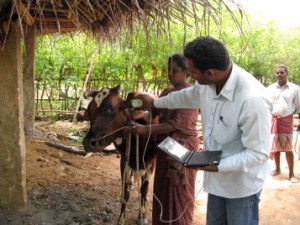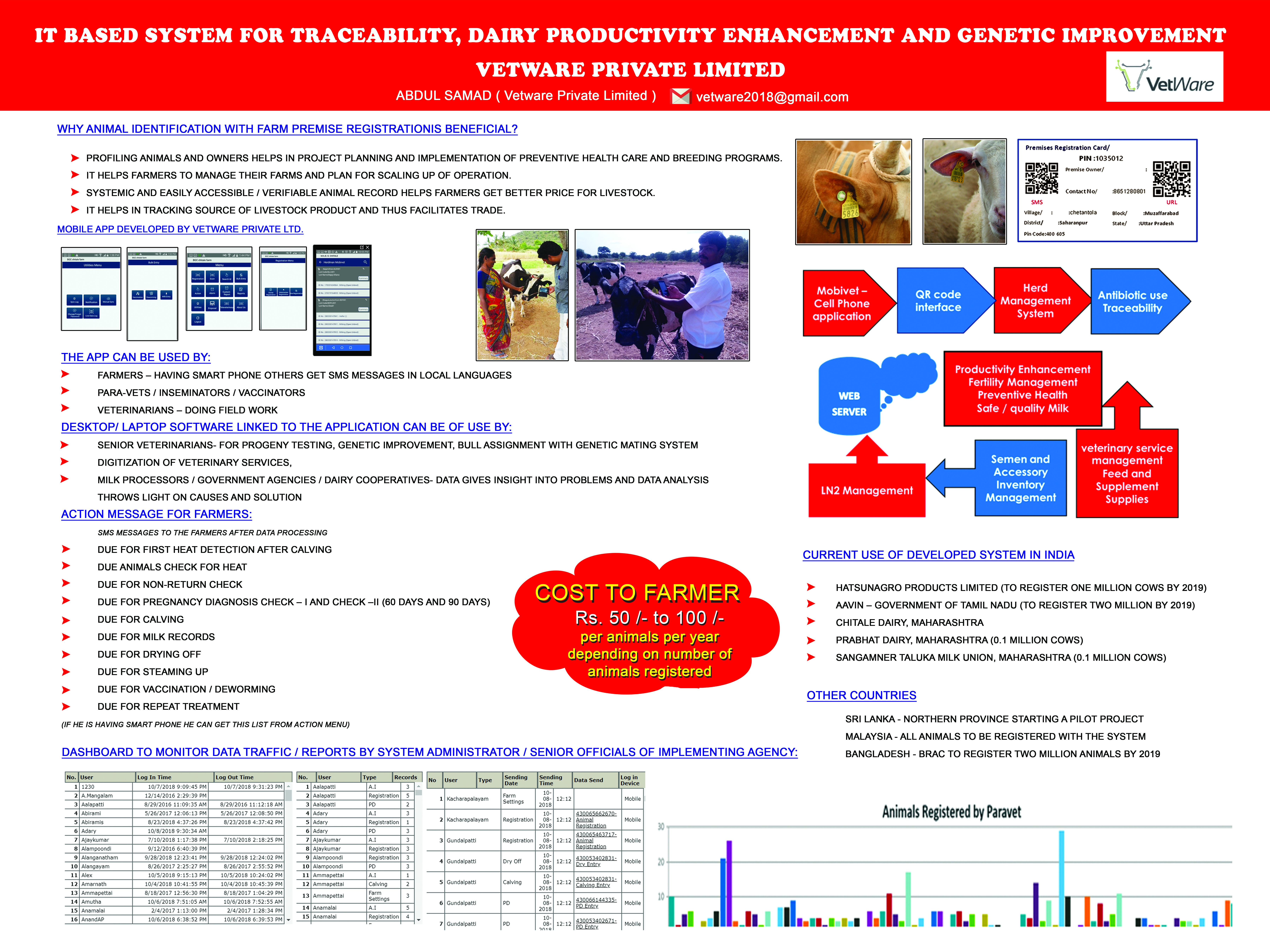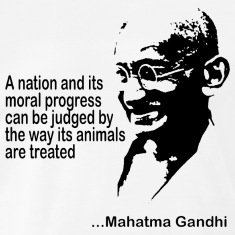Prof (Dr) Abdul Samad
Advisor, Vet ware ( http://www.vetware.in ) and Former Dean, Bombay Veterinary College.
Providing support services at the doorstep of the dairy farmers is crucial to sustain the dairy development work. In the absence of such services, farmers face difficulties in getting breeding, health and productivity enhancement services.
Constraints of the Current System: The current system has following constraints because of which it is not yielding desired results of productivity improvement in dairy animals.
- It is not continuous, the groups of animals are not assigned to the AI worker / veterinarian hence accountability is absent. The government services are stationary and not delivered at the farmers’ door. Quality inputs are not available as a result the overall quality of services is very poor which affects the farmers’ profits
- It is not target driven, whereas the target should be for reducing the cost of production, enhancing fertility and productivity.
- Genetic improvement of animals and evolving improved breeds should be the long term goals which demand implementation of scientific breeding system.
- The services should have a strong extension orientation wherein teaching the farmers new management techniques should be an integral part of the services.
- The current system pays based on visits for treatment of sick animals, that is more sick animals more money for the veterinarian, but is not in the interest of farmer.
- Some veterinarians and para-veterinarians gets paid for using drugs. It may lead to irrational usage of drugs.
- There is not division of work between AI workers and the veterinarians hence ‘Team Work’ for achieving goal of productivity is absent.
Urgent need to implement improved services as per international norms:
As per the FAO of UN guidelines the veterinary services should have following :
- Continuous and long-term.
- High quality and consisting of multitude of services.
- Should not be focused on only curative but preventive with objectives of maintaining animals healthy and productive
- The service providers should be accountable to the stakeholders and should primarily strive to maintain animal healthy and productive and be paid for it.
- The extension services should be an important part of the basket of services.
- It should be target-oriented, the target should be for achieving goals of fertility, productivity and profitability to the farmers
- The ultimate long-term goal should be developing new breed, genetic improvement and environmental sustainability
Important assumptions: Following are the important assumptions
- The services will be available at the doorstep of the farmers
- The services will be protocol-based and as per scheduled based on prediction of physiological and other events in the animals and should not be based on farmers’ observing the animals.
- The services will be in ‘Team mode’ model wherein the professional veterinarian and the AI workers provide complimentary services as team under the supervision of the professional veterinarian.
- The farmers are ready to pay the cost of or at least a part of the services and enter into contract with the veterinarian team and the cost of contractual services should be less than what the farmer is paying for curative services.
- Sickness treatment and cost of normal drugs should be included in the contract cost so that sickness attending and drug usage become deterrent for the Service Team.
- The Milk Processors / the Milk Union or the cooperative society agree to become part of the contract and recover the service cost from the milk bill of the farmer and pay to the veterinarian team.
Responsibilities of AI workers and veterinarians: Since preventive and protocol-based services are to be provided it revolves around animal registration and periodic data recording. The basket of services consists of following components to be provided by the veterinarian and the AI workers:
Following basket of services should be provided to the farmers by the ‘Veterinary Support Team’ considering village as the herd and the same would have fixed health, productivity and fertility targets.
| Head of service | Professional Veterinarian | AI Worker / Para-veterinarian |
| Animal Data Recording | Review of reports generated by web based service provider. Determination of performance indices for fertility and production for each village / cluster.Undertake Macro-level data analysis for developing productivity enhancement policies and strategies for the area. Review of farmers’ and AI worker performance reports. |
Animal registration / ear-tagging and collection of data of animal using SMS based template from his or her mobile.Collection of periodic milk records and supplying the same to the web server using given SMS template from his or her mobile.Collection of linear trait information and registration of calves using given SMS template from his or her mobile. |
| Breeding and fertility services | Develop breeding strategies for individual animal based on broad breeding objectives of the organization.Procurement of semen and sire assignment to cows / buffaloes.Evaluation of current graded breeds and breeding strategies. | Carry out insemination based on sire assignment and prediction. Supply of AI, non-return and other breeding information to web based server using mobile designed template as SMS.Pregnancy diagnosis, attending to calving and drying off.Taking weight of the calf and body scoring. |
| Health services | Data analysis for disease incidence and planning based on web generated reports sent through email / SMS.Providing referral services for sickness treatment / surgery, laboratory services. | Vaccination / test-based deworming.Collection of samples for routine disease testing, milk / urine testing. |
| Extension Services | Training farmers on fodder / silage / enrichment / milking / feed and fodder planning, Cost of milk production calf rearing, marketing etc. | Organizing meeting, providing information to farmers, demonstration of fodder / silage / straw treatment etc. |
| Marketing support | Networking and coordination with cooperatives and market agents. | Data collection on ground. |
How the services can be organized: A team consisting of 10-15 AI ( Artificial Insemination ) workers and one professional Veterinarian can be formed so that they can enter into cooperation contract for providing basket of services to the farmers in specified area as a ‘Team’. Each para-veterinarian / AI worker looks after 500 -750 registered animals whereas the veterinarian is the leader for around 10,000 registered animals. The team enters into a contract with the society / milk processor / milk union and the farmers for providing basket of services for a pre-decided fee on per animal basis (calves, heifers and breed-able).

Animal data recording in Indian villages
The farmers have option to decide on animals to be included in the contract but should not be less than two animals per farmers. The fee should include input costs, such as, semen, insemination, pregnancy testing, extension services, milk analysis, vaccine, deworming drug, common drugs, etc.
The veterinarian team should also set up and maintain a level- I health diagnostic laboratory and the fee mentioned above includes the cost of diagnostic services.
Financial arrangements:
The farmers’ society / milk processor can provide 50% of the contract fee cost (usually the input costs by procuring it centrally), whereas, the other 50% cost is adjusted and paid by the farmer and recovered from milk bills and paid directly to the veterinarian team on per month basis. The cost of fodder seed, silage inoculants and other supplements are directly paid by the farmers but preferably quality checked and procured by the Milk Processor / Society.
In addition the veterinarian team can also earn extra by arranging to supply other inputs and by participating in livestock and product marketing.
Currently the farmers spend an average of more than Rs. 500 per animal per year on veterinary cost (AI, semen, visits for treatment, surgery, common medicine, etc.). Based on a conservative estimate it is suggested that the annual average contract fee of Rs. 465 per animal (irrespective of age group) should be sufficient to cover the veterinary services to the farmers, which would include cost of common drug (excluding vaccines, dewormer), semen (except imported or elite bull), laboratory investigations, (such as metabolic profiling, brucella, CMT, etc.) (especially herd based). Out of this 50% cost can be born by the society / milk processor and the other half can be born by the farmers. The above rates however are only indicative and should be worked out in each case.
The Responsibilities of the Society / Milk Union / Processor:
- Providing space for the laboratory and office space for period of the contract.
- Procurement of animal data recording and analysis related web-based services provided by various companies.
- Bear the cost of ear tags.
- The Society / Milk Union / Processor remain the co-owner of the data along with the farmers.
- Decide on the share of the fee to be born by the society and preferably invest this share in central procurement of web services, semen, drugs, kits, etc.
Functional Arrangements:
- The web based service provider will provide daily ‘Action List’ to the AI workers and the farmer via SMS and accordingly the AI workers carry out the day-to-day work and also provide the data back to web server by SMS.
- The veterinarians provide scheduled visits and services to solve the detected problems of the farmers.
- The AI workers and veterinarian plan for the fodder and feed resources to minimize the cost of production.
- Monthly meetings, workshops and camps are organized to solve the problems of the farmers.
- The veterinarian team to provide other input services, such as, supply of mineral mixture, marketing services, fodder seed, supplement and inoculants, etc. ( For this farmers can be charged extra as per mutually decided rate ).

IT based system for traceability, dairy productivity enhancement and genetic improvement.
Photo credit: Author




